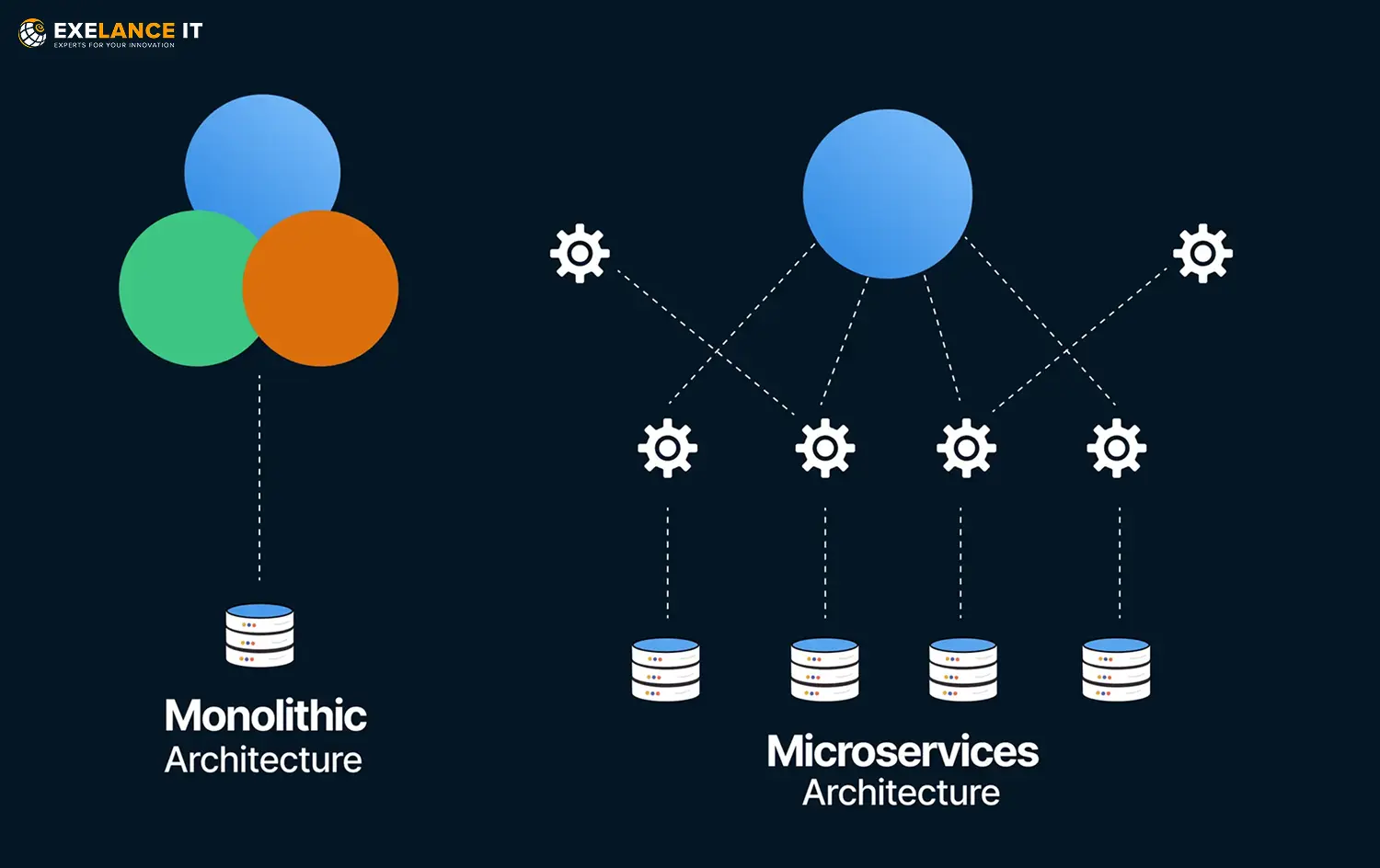Transitioning from Monolithic to Microservices: Best Practices for Scalable Applications
Introduction
In today’s fast-paced digital world, businesses require applications that are scalable, flexible, and easy to maintain. However, traditional monolithic architecture often struggles to meet these demands due to its tightly coupled structure. This is where microservices architecture comes in, offering a more modular approach that enhances scalability and agility. In this guide, we’ll explore the journey of transitioning from monolithic to microservices, the challenges involved, and best practices to ensure a smooth migration.
1. Understanding Monolithic and Microservices Architecture
What is Monolithic Architecture?
Monolithic architecture refers to a software design where all components of an application are built as a single, unified unit. While this approach is simple to develop and deploy initially, it poses challenges in terms of scalability, maintenance, and flexibility.
Challenges of Monolithic Applications:
- Difficult to scale specific features independently.
- Slower deployment cycles and longer development times.
- Increased risk of system-wide failures.
- Limited flexibility in adopting new technologies.
What is Microservices Architecture?
Microservices architecture breaks down applications into smaller, independent services that communicate via APIs. Each microservice is responsible for a specific function and can be developed, deployed, and scaled independently.
Benefits of Microservices:
- Scalability – Each service can be scaled independently based on demand.
- Faster development cycles – Teams can work on different services simultaneously.
- Resilience – Failures in one service do not affect the entire system.
- Technology flexibility – Different technologies can be used for different services.
- Scalability – Each service can be scaled independently based on demand.
- Faster development cycles – Teams can work on different services simultaneously.
- Resilience – Failures in one service do not affect the entire system.
- Technology flexibility – Different technologies can be used for different services.
2. Why Transition from Monolithic to Microservices?
Many businesses are moving from monolithic to microservices to improve their application performance and agility. Here’s why:
- Improved scalability – Scale services individually instead of the entire application.
- Enhanced fault isolation – Prevent system-wide crashes by isolating failures.
- Faster deployment – Continuous integration and deployment (CI/CD) become more efficient.
- Increased flexibility – Adopt new technologies without disrupting the whole system.
3. Best Practices for a Smooth Monolithic to Microservices Transition
Assessing and Planning the Transition
- Identify critical services that need to be broken down first.
- Define clear objectives and roadmap for migration.
- Ensure proper documentation and team alignment.
Choosing the Right Microservices Architecture
- Implement API-driven communication for seamless integration.
- Use event-driven architecture to improve efficiency and scalability.
Database and Data Management Strategies
- Decide between shared databases vs. distributed databases.
- Implement proper data synchronization and consistency mechanisms.
Implementing DevOps and CI/CD Pipelines
- Automate deployment, testing, and monitoring.
- Use logging and monitoring tools to track service health and performance.

4. Common Challenges in Microservices Migration & How to Overcome Them
Service Communication Issues
- Use API gateways for secure and efficient service-to-service communication.
- Implement load balancing to manage traffic effectively.
Managing Security and Authentication
- Implement authentication mechanisms like OAuth 2.0 and JWT.
- Use encryption and secure API endpoints.
Handling Data Consistency
- Use event-driven patterns like saga transactions.
- Implement eventual consistency where needed.
Avoiding Microservices Sprawl
- Keep microservices focused and avoid unnecessary fragmentation.
- Use orchestration tools like Kubernetes for better service management.
5. Case Studies & Real-World Examples
Netflix: A Successful Microservices Transition
Netflix moved from a monolithic system to microservices architecture to handle its growing user base and streaming demands. This transition enabled:
- Improved system resilience.
- Faster deployment of new features.
- Better scalability during peak traffic periods.
Amazon: Enhancing Scalability with Microservices
- Amazon’s transition from monolithic to microservices allowed the company to scale individual services efficiently, leading to improved performance and faster innovation.
Conclusion
Migrating from monolithic to microservices is a strategic move for businesses looking to build scalable applications. While the transition comes with challenges, following best practices such as proper planning, implementing DevOps, and ensuring secure service communication can lead to a successful migration. By adopting microservices, companies can future-proof their applications and improve their ability to innovate rapidly.
Ready to transition to microservices? Start by identifying key services and implementing a roadmap for a smoother migration!
Follow us

